
75 minute read
4. BUILDING DESIGN, ARCHITECTURAL & LANDSCAPE CHARACTER
4. BUILDING DESIGN, ARCHITECTURAL & LANDSCAPE CHARACTER
DESIGN GUIDELINES FOR DETACHED HOUSING · PRECINCT A PRECINCT A
Memorable streetscapes incorporate attractive house facades, well defi ned and landscaped front gardens together with consistent fences.
Houses are designed to provide a desirable outlook for residents and to create safer and more visually appealing neighbourhoods.
4.1 BUILDING FACADES, STREET
FRONTAGE & CHARACTER
The building facades and character of homes at The Waterfront Shell Cove should refl ect the coastal location and articulate the sustainable focus of the community. Facades should respond to the Shell Cove microclimate, explore different elevation treatments related to orientation, incorporate external shading components such as verandahs and utilise high quality, durable materials and fi nishes suitable for coastal conditions.
The design quality of facades will also be infl uenced by the articulation of facade elements, innovation of environmental sustainability, proportion, transparency, the interplay of light and shade, materiality and colour.
Forms of articulation include blade walls, steel and natural timber posts, entries, balconies, verandahs, pergolas, screens, awnings, feature walls and a combination of external materials. To foster interaction with the street, it is preferable that an indoor living area should provide surveillance over the primary street and open onto a weather protected useable outdoor space.
Design Objectives
• To establish a memorable and relaxed coastal character that is responsive to local microclimate. • To establish a high quality of visual presentation of dwellings to streets and the public realm. • To foster an interactive relationship between the dwelling, its occupants and adjacent streets and public realm.
Design Requirements
• All buildings are to positively contribute to the character of Shell
Cove through quality (design) composition of facades. • Facades are to be contemporary in character and may refl ect traditional coastal holiday homes in their simplicity of form, verandahs and 'lean-tos' and vertical, rectangular windows set into walls. • Reproduction or replica styles of buildings such as Federation,
Georgian, Tuscan or Tudor are not considered to be appropriate at The
Waterfront Shell Cove.

Coastal landscape quality Contemporary coastal living Outdoor rooms & living areas Timber 'boathouse' detailing Timber 'boathouse' detailing painted posts and railings (open) painted posts and railings (open) 1/2 round gutters and 1/2 round gutters and circular downpipes circular downpipes 600mm wide eaves 600mm wide eaves 450mm min. 450mm min. At least 50% of external At least 50% of external walls to be lightweight walls to be lightweight Light, natural, coastal Light, natural, coastal colours colours Living area to the street Living area to the street Clear, safe and accessible Clear, safe and accessible entries entries Attractive and usable Attractive and usable front outdoor space front outdoor space


FIGURE 30: Preferred Design Elements
Light coloured metal Light coloured metal roofi ng and insulation roofi ng and insulation
Vertically proportioned Vertically proportioned window openings with window openings with expressed trim expressed trim Metal roofi ng preferred Metal roofi ng preferred
Simple garage door Simple garage door colour similar to colour similar to house or in timber house or in timber
Verandah, porch and/or Verandah, porch and/or balconies minimum 30% balconies minimum 30% of front facade of front facade
23
4DESIGN GUIDELINES FOR DETACHED HOUSING · PRECINCT A PRECINCT A
• Facades should provide a richness of detail and design interest especially at visually prominent locations. • Dwellings should be articulated so that the main building line is forward of the garage. Materials, balconies and porches should be composed so that the garage does not dominate the front elevation.
Coastal Character
The design of your home should contribute to the contemporary coastal design character encouraged at The Waterfront Shell Cove. This can be refl ected in:
• Maximising indoor / outdoor relationships that create a sense of 'openness' and 'transparency' with opportunities for 'outdoor' rooms, verandahs, balconies and porches. • Using materials, colours and textures that refl ect the natural coastal landscape • Use of lightweight external materials particularly to the upper levels. • Receiving ample sun into living areas and maximising natural cross ventilation for summer cooling • Utilising external sun control and privacy devices to add character and save energy



Lightweight materials and simple building forms encouraged for coastal character • Adopting vertically proportioned windows, expressed trim and timber "boat house" details. • Horizontal shading elements are encouraged.
External Materials
Building facades of predominately lightweight materials are encouraged to contribute to the coastal character of the community. • The creative use of contrasting / complementary lightweight materials is encouraged particularly to upper building levels. Materials can include timber or reconstructed weatherboards, plywood, compressed
fi bre cement products and metal cladding. • A mix of external materials is required. As a general rule, at least 50% of external materials are to be lightweight in character (to all facades). • At least two complementary materials or fi nishes should be used for facade articulation. • Rendered, bagged/painted masonry or brick / stone should be limited to the lower parts of the building. For two storey houses, masonry should not be above the fi rst fl oor balcony or window sill height. • All materials and fi nishes to resist coastal elements and be easily maintained.

External materials Metal Metal
Lightweight Lightweight
Masonry Masonry
DESIGN GUIDELINES FOR DETACHED HOUSING · PRECINCT A PRECINCT A
• Refer to Section 4.6 and Appendix G for the preferred external materials palette.
Verandahs, Balconies and Balustrades
Oversized and generous verandahs, porches and balconies are encouraged to take advantage of the favourable Shell Cove climate and opportunities for indoor/ outdoor spaces.
Balconies, verandahs and porches can be incorporated within the articulation zone of 2.5m within the front setback.
As a guide front porches and verandahs should take up a minimum of 30% and up to 50% of the width of the front facade at ground level. • Balconies designed with pergolas, operable louvres and screens to increase climate control and create 'outdoor rooms' are encouraged. • Detailing of balconies, verandahs and balustrades should be generally open in style and refl ect a coastal character using vertical timber battens, steel, mullion less or opaque glass, stainless steel wire or a combination.
Design Objectives
• To maximise opportunities for outdoor living and useability of outdoor living spaces at all times of the year.
Design Requirements
• Verandahs should have a minimum depth of 2.5m to be useable. • Doors and windows should generally be the full width of the balcony or verandah to maximise indoor/outdoor relationships. • Balconies and verandahs that wrap around the corners of buildings are encouraged. They should be intergrated and complement the overall design.
Environmentally Sustainable Design (ESD)
To conserve energy and save money your home design should include elements that increase the sustainability and performance of the building. For example: • Incorporate operable screens and shutters particularly to east and west facing openings. • Incorporate protective eaves (minimum 450m wide; 600mm preferred) or alternative shading devices. • Use of operable glass louvres is encouraged to maximise cross ventilation opportunities.
Refer to Section 5 of the Design Guidelines for ESD requirements.
Verandah / Porch Verandah / Porch 30-50% 30-50%

Proportion of verandahs and porches of front facade Outdoor living room with pergola Open style balcony with balustrades comprising timber and glass Protective eaves and overhangs required.



25
4DESIGN GUIDELINES FOR DETACHED HOUSING · PRECINCT A PRECINCT A
4.2 BUILDING ENTRY AND
RELATIONSHIP TO THE STREET
The building entrance is the primary address of your home, it creates an interface with the public domain, contributing to the identity, legibility and safety of the street and the design character of your home.
For safety purposes, separate entries from the street for pedestrians and vehicles are encouraged.
Equitable access is also encouraged. Where possible provide a safe, continuous, step free pathway from the street entrance and/or the parking area to a dwelling entrance. • The front door opening should be a clear 850mm minimum width for wheelchair use. • Entries are to be visible, generous and safe. • Front doors should be contemporary in design and incorporate a glass side panel or glass insert view panels. Any security doors are to be simple and contemporary in design. • An entry plinth is to incorporate elements such as street numbers mailboxes etc. (Refer to Section 4.8). • All levels of dwellings on corner lots are required to have windows to both the primary and secondary frontages to provide for passive surveillance to both frontages.
Design Objectives
• To establish legible and intuitive relationships between dwellings and the primary street. • To provide accessibility for people of all ages and abilities.
Design Requirements
• A front verandah, porch or covered area (by way of an awning or similar) should be provided at, or over, the dwelling entrance to provide weather protection. • Locate the primary entry to buildings from the main street frontage by providing visible entries.

Front porch Front verandah
4.3 IMPORTANT CORNERS
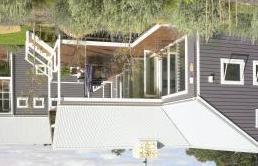
The corners of houses that face intersections, open space and act as termination points to public vistas are important and should reinforce their prominent location by quality of design.
This can be through articulation of the building form at corners, increased height (within the concept plan approval limit), the use of architectural design elements such as balconies, verandahs, pergolas, corner windows, the use of interesting forms and/or colour emphasis.
Design Objectives
• To ensure that dwellings on corner lots address both the primary and secondary street (or public open space) frontages. • To reinforce the prominent location of corner dwellings and establish a sense of visual interest.
Design Requirements
• Two storey building elements are required to be used at key corner lots as per Figure 6. • Key corner lots have been identifi ed on Figure 6 to provide visual reference points and contribute to the creation of a sense of identity for the neighbourhood.
DESIGN GUIDELINES FOR DETACHED HOUSING · PRECINCT A PRECINCT A
• These sites require an architectural response to defi ne a relationship with their surroundings. The architecture of the key sites can be expressed though some of the following methods; – Taller elements on corners within the concept plan approval limit –Distinctive colour on particular elements –Articulation on all public frontages –Glazing on all public frontages –Distinctive planting
4.4 GARAGES AND DRIVEWAYS
Garages are to be setback behind the main building facade a minimum of 1m and should not dominate the streetscape or building appearance. The driveway area should not dominate the entry or views from the street.
Exceptions to setbacks for garages will be made where garaging is accessed from rear laneways or from secondary streets. Driveways should be integrated with the design of the front landscape area and complement the building design.
Design Objectives
• To minimise the visual dominance of garages on the dwelling facade and streetscape. • To soften the visual impacts of driveways. • To provide for sight distance safety.
Design Requirements
• Refer to Table 1 for design requirements. • The maximum garage opening is to be no greater than 6m. • Triple garages will only be permitted in a tandem arrangement.



Corner emphasis by window design
Corner emphasis Design addressing the corner • Garages, particularly for 11m - 13m wide lots, are to be designed to reduce the visual impact of the street. The architectural design must demonstrate an outcome to reduce visual domination of garages where the garage is located on the primary street frontage. The following measures or a combination of these measures would be considered appropriate in this regard: –Overhanging upper level of building so that the garage appears to recede within the built form; –Articulating the front building façade;
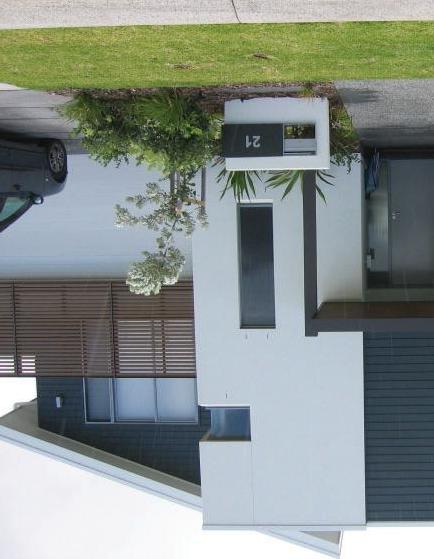
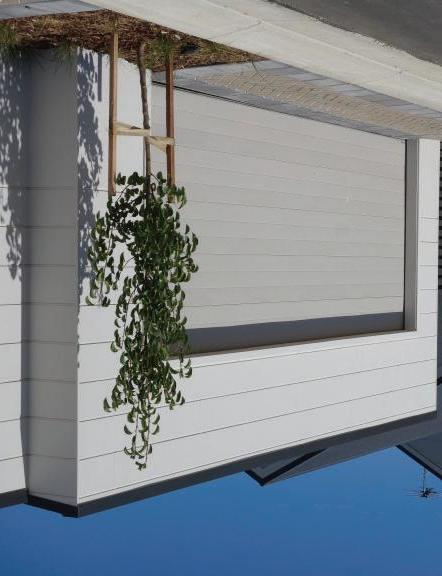
Garage setback behind building line Paving and landscape between garage and laneway Colours and materials to match and integrate with the main dwelling

27
4DESIGN GUIDELINES FOR DETACHED HOUSING · PRECINCT A PRECINCT A
–Creating texture in the materials used in the front façade that reduce the garage dominance; and – Selection of darker, more recessive garage door colours. • Prohibited vehicle access is shown on
Figure 4 and Figure 6. • Detached garages should match the main house roof form and materials. • Rear loaded garages in laneways will have 0.5m setback from the rear boundary. Garages on zero side lot line permited as nominated on Figure 15. • Any studios or balconies above can be on the side building line, provided the garage can be zero side lot lined as defi ned in Figure 15. • Space between a lane and garage is to be paved, in coloured or exposed aggregate concrete. • Minimum dimensions for car parking spaces are to comply with Australian
Standards (AS/NZ 2890.1:2004
Parking Facilities - Off Street Parking).
• Minimum sight lines for pedestrian safety to be provided.
Treatment and Screening
• Garages are to be constructed in materials and fi nishes to match or integrate with the main dwelling. • Garage doors are to be of contemporary design and not overly "featured". • Segmented door systems including panel lift and sliding doors are preferred with long horizontal panelling. • Vertical roller doors are not permitted.
Driveways
• Driveways and paved areas should be minimised. • Uncoloured concrete and bitumen will not be approved. • There should be landscaping between the driveway and side boundary. • Only one driveway crossover is permitted and is to be in accordance with Shellharbour Council specifi cations.

Garage colours match main dwelling Segmented door system Timber doors with natural light access Segmented sliding doors and permeable paving Sliding garage doors

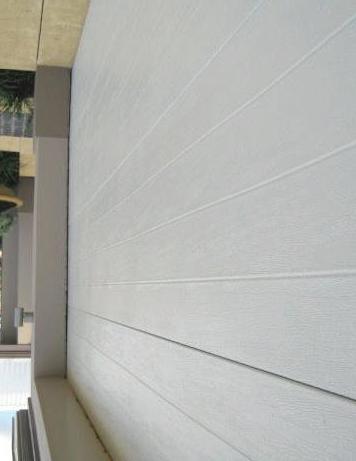


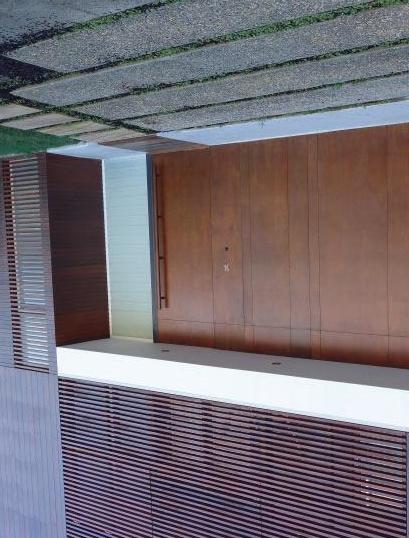
DESIGN GUIDELINES FOR DETACHED HOUSING · PRECINCT A PRECINCT A
4.5 ROOF DESIGN
The roof is a key component of the design expression of your home. Quality roof design considers the contribution of the roof to the overall performance and function of the building.
Simple gable and hip roof forms are preferable for street frontages and may be combined with verandah and upper balcony elements to form an attractive street elevation.
Design Objective
• To promote climate responsive roof forms that respond to the desired coastal character of Shell Cove.
Design Requirements
• Roof design is to be treated as an integral part of the overall design of your home. • Roofs should be simple in form with gable and hipped roofs at a minimum of 24 degrees and a maximum of 42 degrees. • Skillion roofs can be lower in pitch, for example, 10-15 degrees. • Articulated roof forms are encouraged to provide solutions for natural light and ventilation, summer shade and winter sun penetration to the interiors. • The use of low pitched, multi-plane, curved and hovering roof forms are encouraged and considered on design merit where they establish a distinctive coastal character. • "Boathouse" forms and deep overhanging roofs which extend to verandahs are encouraged and may include special treatments such as
exposed truss and rafters or natural timber eave linings. • A variety of roof forms is encouraged along streetscapes. • Roof styles are to be predominantly hipped, gable, skillion or fl at style.
Roof forms are not to be excessively obtrusive or likely to cause loss of amenity to the streetscape or neighbours. • Appropriate use of eaves, pergolas, screens, awnings, and louvres should be incorporated into the house and roof design to provide protection to the north, east and west facing windows • Roof forms should be designed to maximise solar gain to north facing windows in winter and control excessive solar gain in summer • Elevated roof forms are encouraged to have operable windows to facilitate ventilation and the release of warm stale air • Where used, eaves are to be a minimum of 450mm from the face of the building to provide adequate protection • Eaves are to be used on all frontages except for walls on zero lot boundaries, or where a parapet is used • Light coloured, insulated metal roofi ng is the preferred roofi ng material. • Unpainted or highly refl ective roofs will not be approved. • Service elements (such as vents and skylights) should be integrated into the roof design and / or painted to match the roof colour.

Simple roof forms and lightweight materials "Boathouse" roof form Low pitched skillion roof form Articulated roof form for light and ventilation
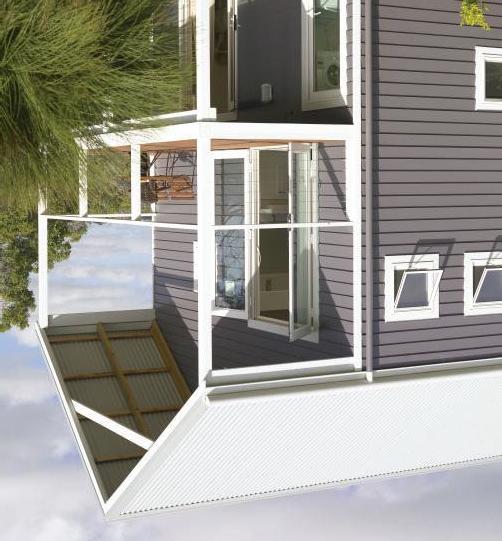

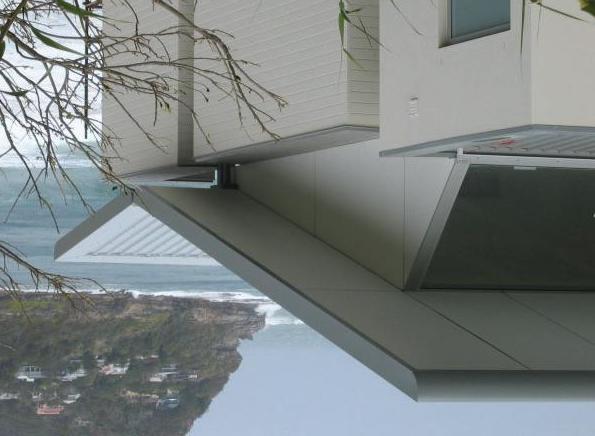
29
4DESIGN GUIDELINES FOR DETACHED HOUSING · PRECINCT A PRECINCT A
4.6 EXTERIOR DESIGN PALETTE Design Objective
To provide a selection of external colours and materials that will allow for individual design expression and establish a cohesive coastal character.
Design Requirements
The choice of external materials and colours should relate to the natural and visual character of the Shell Cove landscape.
The selection of external materials and fi nishes should be suitable for coastal conditions, for example exposure grade bricks. An external colour scheme, together with coloured / coded elevation drawings, is required for the submission to the Shell Cove Architect for approval.
Composition of materials such as natural stone, timber and expressed steel elements are encouraged to add variation.
The principal base colours of buildings should be natural, relatively neutral and light in tone, with stronger accent colours to be used on specifi c building elements such as screens, projecting blade walls, sun shading, pergolas, balconies, gutters and trim.
Where masonry is used, this is preferred to the base of the building with lightweight materials used for the upper levels.
Large areas of dark colours and materials including the roof and highly refl ective fi nishes will not be approved.




Natural landscape materials, colours and textures as inspiration for external colour choices
COASTAL COLOUR COMBINATIONS
Shale Grey
Stormy
Castle Grey Surfmist
Shale Grey
Windspray
Strauss White
Snowdonia
Gravel Chip Dune
Astor White
Autumn Bushland
(Images and colour combinations sourced from Wattyl http://www.wattyl.com.au/system/galleries/download/pdf/Exterior_Colour_Schemes.pdf)
The Waterfront Shell Cove Colour Palette (refer to Appendix G) The W Wat terf fro t nt Sh Shell C Cov C eC l olour Pl Pal tt ett ( e( f refer t to A App d endi ix G)
Mantra
Shale Grey
Icing White
Sateen Snow
Flokati
Dune
49
DESIGN GUIDELINES FOR DETACHED HOUSING · PRECINCT A PRECINCT A
Preferred Materials and Colours
Element
Solid walls
Roofs, Gutters & Downpipes Preferred Materials
Masonry (lower walls) can include: • Sandstone or stacked natural stone (not vitrifi ed tile equivalents) • Rendered, bagged or painted blockwork or brickwork • Face brickwork - smooth face only.
Textured bricks will not be approved • Split face block work All brickwork and associated fi ttings are to be coastal rated. Cladding (all walls):
• Timber • Weatherboard • Plywood • Prefi nished metal • Zinc • Copper • Rendered Blue
Board • Painted CFC
• Metal roof sheeting is preferred. • Selected fl at profi le tiles may be approved on merit. • Rainwater heads and expressed downpipes to be in folded metal • Colorbond standard profi le gutters to match the roof, or stainless steel in round / half round shapes
Windows & Louvres • Glass / timber / painted windows • Aluminium, prefi nished or natural anodised • Expressed window reveals are preferred
Sunshade Devices • Horizontal timber louvres / battens • Aluminium louvres • Canopy roofs compatible with main roofi ng • Painted CFC / Folded metal sheeting
Fencing
(Refer to Section 4.8 Walls & Fencing Detail)
Garage Doors
Front Driveway / Pavement
• Timber pickets / slats • Rendered / painted Masonry plinth and piers • Contemporary timber pickets / slats • Painted steel pickets or fl ats • Natural colours of materials or to match / compliment house • Colour as per Colour Palette • Powder coat colours equal to Colour Palette colours
• Timber / sheet metal / translucent panels • Tilt-up panel doors preferred. Roller doors are not permitted. • Natural or stained timber is acceptable.
• Exposed aggregate concrete (to match existing footpaths). • Stamped, stencilled paving is not permitted. • Natural landscape colours - sand, gravel, greys [preferred • No white / bright fi nishes. • No dark heat absorbing fi nishes Consider combined hard and soft driveway treatments.
Preferred Colours
• Refer to Colour Palette (Appendix G) • Natural colour of materials • Timbers stained (in a range similar to the colour selection) • Pre-fi nished sheet metal (selected Colorbond colours) • Light coastal, natural hues, cream, grey, off white, sand. • Strong brick colours will not be approved.
Note: Alternative wall materials may be approved based on design and merit.
• Off-white and light colours preferred (to minimise heat gain) • Pre-fi nished metal fi nished (colours similar to Colour Palette) • Selected Colorbond roof colours are in light to mid tones being Surfmist, Evening
Haze, Shale Grey, Dune, Windspray and Bushland. • Must be suitable for coastal conditions. • Black roofs are not permitted.
• Natural colours of materials (for example, natural anodised) • Powder coat colours equal to Colour Palette colours
• Natural colours of materials • Colour as per Colour Palette • Powder coat colours equal to Colour Palette colours • Can be accent colours
31
4DESIGN GUIDELINES FOR DETACHED HOUSING · PRECINCT A PRECINCT A
4.7 SUN SHADING AND OTHER
DETAILS
Details such as sun shading devices, balconies, downpipes and privacy screens should form an integral part of your home design.
The following indicates the preferred detailing of these building elements.
Sun shading, Eaves and Screens
Effective sun shading devices, screens and eaves can increase the climate control and habitability of indoor and outdoor spaces and save you money.
Exposed rafters under eaves can add character.
Design Objective
• To foster climate responsive design solutions that contribute to the sustainability, visual quality and coastal character of Shell Cove.
Design Requirements
• The use of timber battens, screens and sun shading devices is encouraged to create "outdoor rooms" for coastal living. • Generous roof overhangs or eaves are encouraged for weather protection and sun shading. The minimum width required is 450mm. 600mm is encouraged. • Provide shade to north facing windows. As a general rule, the projection of north facing sunshades should be 30% of the height of the glass window or door. • Adjustable shading, for example shutters and screens are best to east and west facing openings. • North east and north west window openings often require vertical blades for effective solar control.
Gutters and Downpipes
• Careful design and integration of downpipes and drainage provisions is required to avoid unsightly detailing.


Effective sun shading devices 2100mm 2100mm

Inside Inside Sunhood Sunhood 700mm 700mm
Winter sun Winter sun
Summer sun Summer sun
outside outside
Effective sunshading to north openings • The use of circular down pipes and half round gutters would reinforce the coastal character of the house.
Openings
• Vertically proportional openings are preferred for windows and doors with expressed reveals. • Any security doors are to be simple and recessive with dark coloured mesh. • Fly screens are to match window frame colours and be dark mesh. • External security roller shutters to windows are not permitted.

Detailing under eaves and circular downpipes Integrated downpipe design Circular downpipes


4.8 WALLS AND FENCES
Walls and fences defi ne the boundary between your home and the public domain and contribute to the quality, character and identity of the street.
The composition of fences and walls should provide a balance between opacity and transparency, with materials and colours that convey the contemporary coastal character of The Waterfront Shell Cove.
The fencing guidelines are based on the following principles: • Relatively open streetscapes –open front gardens and semitransparent front fences to promote casual surveillance and community interaction; • Consistent and quality design – to enhance your home investment and unify the street; and • Privacy – achieved by dwelling design, solid side and rear fencing, transparent front and return fencing and landscape.
• Any inconsistencies between this section and sight distance safety provisions, the latter will prevail.
Design Objectives
• To establish a clear delineation between public and private space whilst ensuring appropriate visual amenity (where fences abut a public street or public open space). • To provide visual and acoustic privacy commensurate with the use and location of private open space (where fences abut a neighbouring property). • To foster an interactive relationship between dwellings, their occupants and adjacent streets (where fences abut a public street or public open space). • To promote casual surveillance of the public realm (where fences abut a public street or public open space). • To ensure a quality visual appearance for solid form fencing that abuts a public street (where nominated to screen principal private open space). • To minimise graffi ti. • To ensure adequate sight safety distances.
DESIGN GUIDELINES FOR DETACHED HOUSING · PRECINCT A PRECINCT A
Design requirements
The design of fences and walls is to: • Clearly defi ne boundaries between private and public spaces; • Provide sight lines to the street and public domain to allow passive surveillance and increase safety; • Provide for privacy, particularly for rear gardens and courtyards, without impacting on views, outlook, access to light and natural ventilation; • Provide an articulated and varied interface with the street; • Provide privacy for courtyards within the front setback (refer to "Front
Courtyard Fences") • Provide an address for your home, integrating a letterbox and street number; • Incorporate landscaping where possible to soften the fence line and provide privacy where required; • Avoid creating long stretches of blank spaces that may attract graffi ti; • Comply with sight distance safety provisions; and • Ensure front door is visible.
All fencing is to be consistent with Figure 31.
33
4DESIGN GUIDELINES FOR DETACHED HOUSING · PRECINCT A PRECINCT A
Front Fences
• Front fences can provide for a unifi ed streetscape and a special character for individual lot frontages. At The
Waterfront Shell Cove, front fencing requirements vary depending on the lot address (refer to Figure 31): • Fence Type 1 is a minimum requirement (shown as and ). • Front fence Type 2 is mandatory where the lot addresses entry streets or public open space (shown as ). • Colours and materials of fencing is to be in accordance with Section 4.6. • Fence types as prescribed in Figure 31 and further described in the following sections are mandatory in
Shell Cove. • Front fences can incorporate a low key arbor feature at gate entry.

Example of masonry piers and hedging for corner lots Piers with landscaping

DESIGN GUIDELINES FOR DETACHED HOUSING · PRECINCT A PRECINCT A

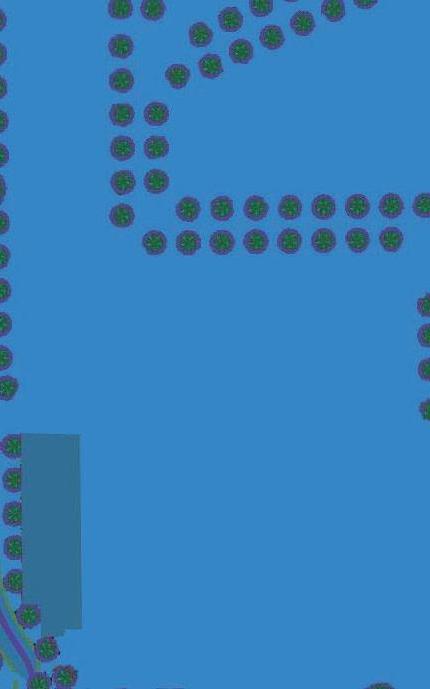
Fence Type 1 Design requirements
• The minimum requirement for all lots (except those where Frasers Property
Australia will build the front fence) is to build piers at the corners of the lot frontage and at the edges of the vehicle and pedestrian entry to the lot.
The piers are to be a maximum of 1m high. • The pier located at the vehicle and/ or pedestrian entry is to incorporate the letterbox, street number and if required, lighting. The colour / fi nish of the street number should be clearly legible against the colour of the pier. • Landscaping is to be incorporated between the piers. You can use stainless steel wire between the piers to support screen planting and / or infi ll planting to provide defi nition to the footpath.
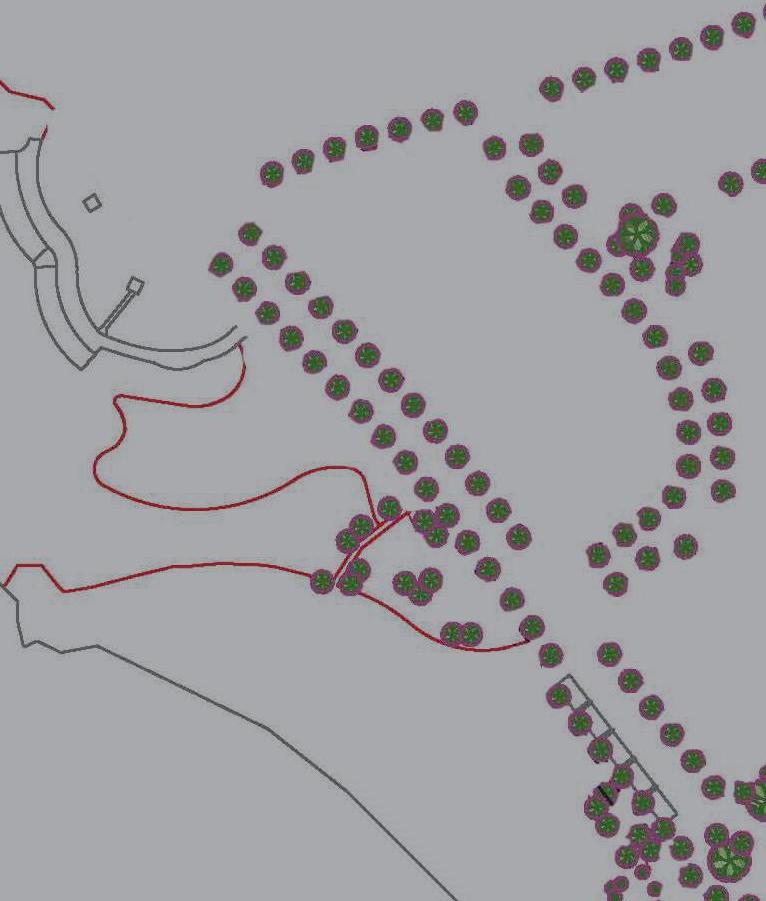



Precinct A boundaries
Detached Lots
Duplex lots
Lot frontages requiring Fence Type 2
BOAT HARBOUR
Future Dry Boat Storage and Maintenance Facility
Lot frontages requiring Fence Type 1 or Type 2. Fence Type 4 permitted for duplex lots (subject to dwelling design) refer Figure 37 Lot frontages with a Fence Type 1, Type 2 or Fence Type 3 (subject to dwelling design), refer Figure 35
Fence Type 4
Fence Type 5
Special Fence (including accoustic fence and retaining wall where required) to be built by Frasers Property Australia (Estate Fence - Various Types - Subject to DA for subdivision) Gate by Frasers Pedestrian gate by resident THE PROMONTORY DRIVE E VE IV
e Boat e e e BF Future Launching L La Lau Ramp
1046 1045 1044 1043 31042 21041 1040 1039 1038
1047 1048 1049 1050
1054 1051
1053 1052 1037
1036
1035
1034
1033
1032
1031
1030
HARBOURBOULEVARD
Boat Launch Car Park
1021 1001
1022
1023
1024
1025
1026
1027
1028
1029 1002
1003 1004 Oceanfront Drivev
BEACH AND PARKLAND
1005
1020 1006
1019
1018 1007
1008
1017
1016 1009
1010
1015 1011
1014
1013 1012
BASS POINT TOURIST ROAD T
FUTURE BUSINESS PARK
FIGURE 31: Fencing type locations
35
4DESIGN GUIDELINES FOR DETACHED HOUSING · PRECINCT A PRECINCT A
Fence Type 2 Design requirements
• Front Fence Type 2 is to be constructed of: –Masonry, rendered bagged or painted piers, with infi ll timber pickets, metal picket (fl ats) or stainless steel wire and turnbuckles (refer Figure 33 and Figure 34). • Infi ll picket fences are to be painted in light tone colour or white and can
vary in terms of the balance of solid to open, and the style of picket (period detailing to be avoided). • Infi ll fencing can have intermediate masonry piers or more simpler supports / newell posts. • Infi ll elements should maintain a consistent height with the piers, at 1m high. • The fence return is to continue along side boundaries to 1m behind the front building facade, then slope or step up to the interlot fence height of 1.8m. • Front gates should be constructed as 'infi ll' fencing. • Gates in front of driveways are not permitted on primary streets • Colorbond or similar metal front fences are not permitted. • Provide pedestrian gates as per
Figure 31.
Front Courtyard Fences - Fence Type 3
Front courtyard fences are permissible in selected locations where the design of dwellings include private open space within the front setback.
Design requirements
• Courtyard fences are permitted as a fencing option in accordance with
Figure 31. • A maximum of 1.5m high • Match the design, materials and fi nishes identifi ed for Front Fences (Type 2) • Be semi-transparent with infi ll timber pickets, metal pickets (fl ats) or stainless steel wire and turnbuckles.
1m Letterbox and street number
GARAGE GARAGE Landscaping Landscaping Rendered, bagged or Rendered, bagged or painted brick pier painted brick pier

Piers to be located at block corners and entries DRIVEWAY DRIVEWAY PORCH PORCH
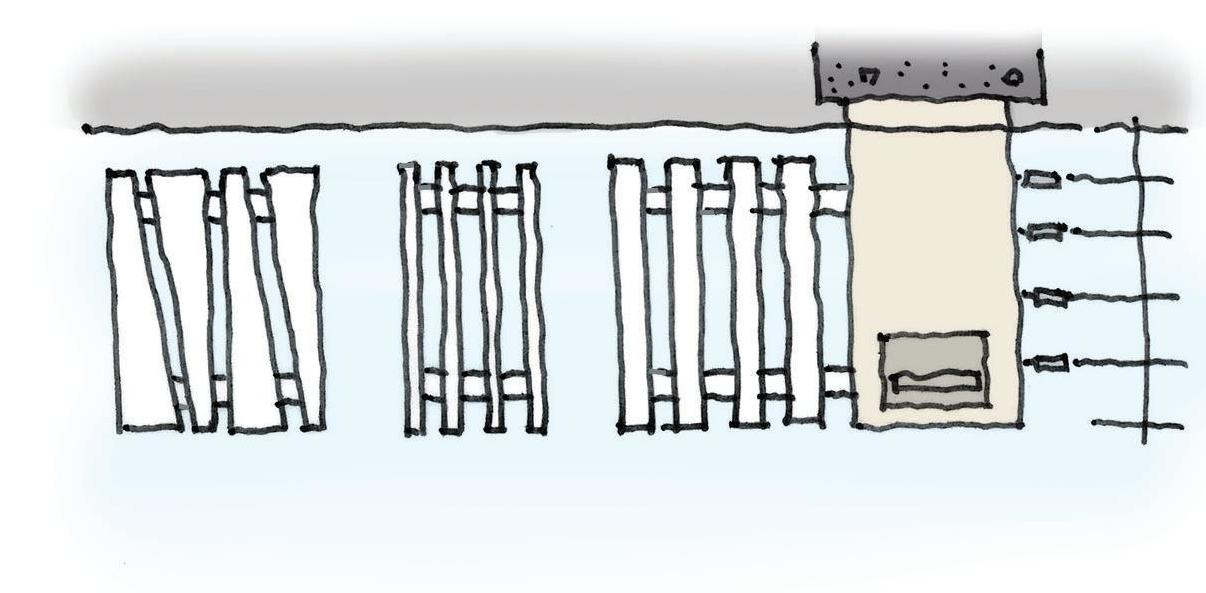
Variable picket designs
FIGURE 32: Fence Type 1 - Piers and infi ll landscaping FIGURE 33: Fence Type 2 - Variable picket designs together with entry pier Indicative DRIVEWAY DRIVEWAY
13m frontage - 13m frontage - Masonry piers & infi ll picket (can be various types) Masonry piers & infi ll picket (can be various types)
15m frontage - 15m frontage - Stainless steel wires & hedging Stainless steel wires & hedging DRIVEWAY DRIVEWAY
DRIVEWAY DRIVEWAY
17m frontage - 17m frontage - Wide pickets & landscape Wide pickets & landscape
FIGURE 34: Fence Type 2 - Indicative front fencing for 13m, 15m and 17m frontage lots
DESIGN GUIDELINES FOR DETACHED HOUSING · PRECINCT A PRECINCT A
Corner Lot Fences & Fencing to Rear Access Lots - Fence Type 4
Corner lot and rear access lot fencing is to provide for private open space to the side or rear of dwellings, together with continuity of fencing to Secondary Street frontages (refer to Figure 37):
Design requirements
• Fences are to be 1.8m high • Fences are to be constructed of: –Bagged or rendered or painted masonry walls; –Horizontal timber battens with or without masonry piers; –Or a combination of the above.
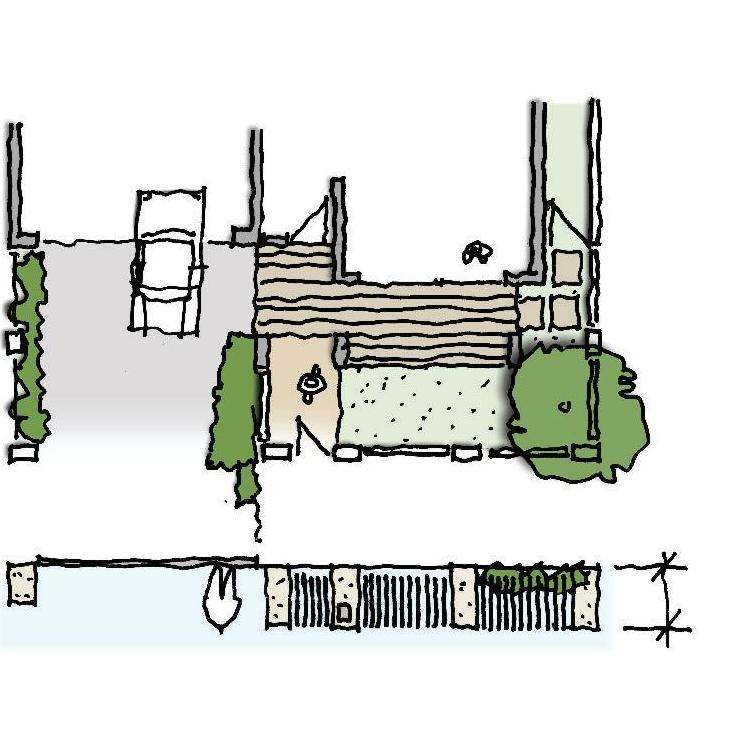

Courtyard fence returns to 1m behind returns to 1m behind front facade LIVING LIVING
GARAGE GARAGE
FIGURE 35: Fence Type 3 - Front courtyard fence, to north facing lots • Masonry or solid timber fencing should be used to screen service areas otherwise a semi transparent character can be provided by horizontal boarding or battens. • Colours and materials of fencing is to be in accordance with Section 4.6, ie masonry to match the house, timber stained, natural fi nish or painted to compliment the house.
• Due to their long lengths, secondary frontage fences are to include a combination of the above.


FIGURE 36: Fence Type 4 - Corner lot & rear access lots • With single storey development
Type 4 Fence will be part or full length timber battens or similar open formed treatment to provide casual surveillance unless adjacent to principal private open space.
Corner Lot Fences
• Corner lot fences are to comply with the design requirements set out above (for Type 4 Fences) . • Can be up to 70% of the length of the side lot boundary, aligned to the rear of the lot. • As an alternative to the corner lot fences, the front fence or courtyard fence can continue along the secondary street frontage if preferred. • Gates to driveways are permitted in corner lot fences where vehicle and parking access is provided from the secondary frontage at the rear of the lot.
Fencing to Rear Access Lots
• Fencing to rear access lots is to comply with Figure 31. • Provision of landscaping is encouraged to soften edges of walls
1.5m min. setback 1.5m min. setback to garage to garage Gate permissible to Gate permissible to secondary street secondary street 1800mm fence permitted permitted 50% SECONDARY ST SECONDARY ST Front fence Front fence if required if required
PRIMARY STREET PRIMARY STREET
FIGURE 37: Fence Type 4 - Corner lot fencing Garage Garage
Service Service courtyard courtyard
1m behind behind front front facade facade

FIGURE 38: Fence Type 4 - Corner / Rear access lot example
37
4DESIGN GUIDELINES FOR DETACHED HOUSING · PRECINCT A PRECINCT A
and fences, which could be setback accordingly. • An access gate is required to both primary and secondary street frontages.
Side and Rear Fences - Fence Type 5
Side and rear dividing fences of typical lots are to be:
• Maximum of 1.8m high. • Metal Colorbond type in colour 'Riversand' • Masonry can be used for courtyards, if desired, and must relate to the materials/colours of the house. • Metal fencing should have a simple profi le without decorative trims or lattice • Side boundary fences are to start 1m behind the front building facade. • Side and rear metal fencing is not permitted to any street or lane frontage or adjacent to public places such as public open space.
Bagged brickwork 1.8m high 1.8m high side and side and rear fence rear fence

Concealed bin area Setback for landscape Elevation Elevation

GARAGE GARAGE
Rear Access Street Rear Access Street Secondary Frontage Secondary Frontage Plan Plan Side fence Side fence to start 1m to start 1m behind front behind front building line building line
1m
4.5m 4.5m
Masonry piers Masonry piers with no infi ll with no infi ll fence fence 5.5m 5.5m
FIGURE 39: Fence type 4 - Fencing to rear access lots FIGURE 40: Side and rear fencing (with front fence type 1)
Special Fencing (by Frasers Property Australia)
• Appropriate height and scale (height to be minimised). • Provide noise protection as appropriate. • Comply with sight distance safety provisions. • Provide passive surveillance via visual permeability where appropriate. • Provide privacy to principle open space where appropriate. • Consistent with and complementary to fencing provisions in these design guidelines. • Complement open space / open space design where interfacing with open space. • Provide gates for access from lots to adjoining open space. • Provide pedestrian gates as per
Figure 31.
Retaining Walls
Most lots in Precinct A have a signifi cant slope between the front and rear of the lot, which can be up to 1.5m in some instances. Crossfalls can be up to 0.5m. Given the sloping nature of the land, retaining walls will be required. In many instances, retaining walls will be provided by the developer.
For sloping lots where retaining walls are not provided, consideration should be given to minimising the height of retaining walls as well as the visual quality of the materials from which they are constructed.
Where possible, splitting levels within the dwelling is the recommended response to sloping sites. Refer Figure 29.
Where not provided by the developer, retaining walls should be: • No higher than 500mm high. • Considered to be part of the landscape, integrated with other fencing on boundaries. • Generally be neutral elements (for example bagged brick, stone boulders or dry stone walls) and associated with planting. • Retaining walls forward of the house can be masonry to compliment the house design.
Cribwall or treated pine logs are not acceptable.
DESIGN GUIDELINES FOR DETACHED HOUSING · PRECINCT A PRECINCT A
4.9 LANDSCAPE DESIGN FOR LOTS
The landscaping of your home will contribute to the quality of the street and integrate your home with the surrounding coastal environment. Innovative low water, native, coastal gardens are encouraged.
A Landscape Concept Plan is required to be submitted to the SCA for approval. Refer to Appendix B.
Landscaping of your front garden is to be completed within 3 months of the practical completion of your home. Before, during and after construction of your home, your lot is required to be kept clear of excessive weeds, rubbish and maintained to an acceptable standard.
Design Objectives
• To contribute positively to the visual quality of the dwelling and streetscape. • To minimise water consumption. • To maximise functionality and useability of private open space areas.
Design requirements
• Landscape design and materials selection is to suit the coastal conditions, including sun and salt. • Landscape design is to: –Incorporate water conservation measures and effi cient irrigation systems; –Provide for low energy and low chemical use; and –Use compatible materials and colours to complement the home. • Plants should be positioned to provide shade, privacy and to allow access to winter sun. • In the order of 50% of the area within the front setback is to be soft landscape. Where a courtyard is proposed a reduction of soft landscaping to 25% may be considered. • Landscape design is to include a principal private open space with a minimum area of 24m² that has access to direct mid-winter sunlight for 3 hours between 9am and 3pm on 50% of the Private Open Space area.
Shadow diagrams are to be submitted demonstrating compliance. • Refer to Table 1 for other design requirements. • Minimum tree planting requirements are: –Front yard: 2 small to medium shade trees (4-6m mature height). –Rear garden: 1 large shade tree (6-10m mature height).
• Composting bins are encouraged to be used to improve the characteristics of the soil.
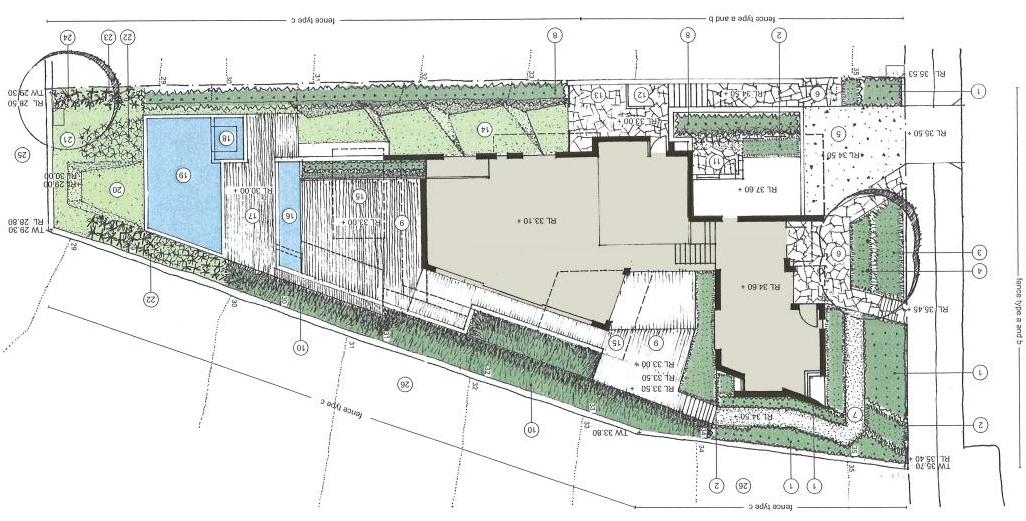
Example of Landscape Plan Coast Banksia

39
4DESIGN GUIDELINES FOR DETACHED HOUSING · PRECINCT A PRECINCT A
Garden Planning
You should carefully plan the functions required of the front, side and rear garden areas. These may include usable courtyards, decks, BBQ areas, paths, compost to vegetable gardens, garden beds, water features, pool and play equipment.
Emphasis should be on indooroutdoor living room connections, view enhancement, and visual screening of service elements. You should take into account solar orientation, prevailing winds for summer cooling and winter protection, views and any neighbourly infl uences.
The inclusion of north-facing outdoor terraces/decks/courtyards is encouraged, including those that face the primary street.
Species Selection
• Predominately local indigenous species selection is preferred. As a guideline at least 70% of plants should be indigenous. • Landscaping is to contain plants that require little more water than is naturally available. • Plant species are to be appropriate to the soil conditions and selected to minimise root interference to house footings and services. • Landscape design and initial planting
should include the provision for growth to maturity of each species. • Consider habitat value of your species selection, native plants attract native fauna, birds, butterfl ies etc. • Refer to the species list provided in
Shellharbour City Council's DCP and recommendation from local nurseries.



Blueberry Ash Common Corea Swan River Daisy Sago Cycad Mat Rush Mixed coastal tussock native grasses


Hard and Soft landscaping
• Both hard and soft landscape materials and fi nishes should be durable in the coastal environment. • Landscapes that incorporate coastal elements such as boulders, rocks, gravel, native grasses and dramatic plant associations in simple, strong patterns are preferred. • Porous, permeable paving solutions are strongly encouraged to increase water infi ltration, reduce runoff and allow air and water exchange for root
systems of trees. For example, where suitable, use stepping stones in gravel and native grasses rather than a continuous concrete pathway. • Lawn areas should be of a type which has low water demand and high drought tolerance. Lawn areas should not dominate the landscape but be located for specifi c purpose. • As a guideline, a maximum of 60% of the soft landscape area to be turf (for example, Buffalo species) and 40% planting beds.
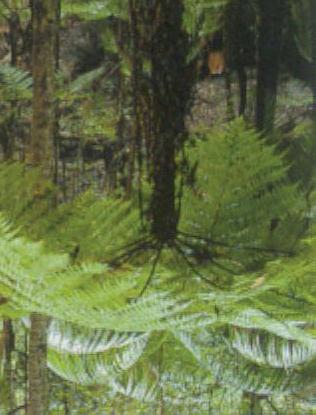
Rough Tree Fern Paroo Lily DESIGN GUIDELINES FOR DETACHED HOUSING · PRECINCT A PRECINCT A

41
4DESIGN GUIDELINES FOR DETACHED HOUSING · PRECINCT A PRECINCT A
4.10 BOAT MAINTENANCE/
STORAGE FACILITY, BOAT
RAMP/BOAT RAMP CAR PARK
AND HARBOUR BOULEVARD
PROVISIONS AND ASSOCIATED
RESIDENTIAL AMENITY Design Objectives
• To minimise potential acoustic and light spill impacts on residents from the boat maintenance/storage facility, boat ramp and boat ramp car park. • To enable operability of the boat maintenance/storage facility generally operating within the hours of 6am to 9pm, 7 days a week basis. • To provide fl exibility for exemptions outside these areas where emergency works or the like are required. • To enable on going operability of the boat ramp/boat ramp car park on a 24 hour/7 day a week basis. • To promote visual amenity. • To minimise road noise impacts on residents. • To enable adequate solar access to residential development. • To ensure pedestrian activities and boat related activities co-exist safely and reasonably.
Acoustic mitigation requirements for lots in vicinity of the boat ramp/boat ramp car park
The following provisions are to acoustically mitigate lots in vicinity, east and west of the boat ramp/boat ramp car park. Relevant lots and proposed acoustic measures will be confi rmed as part of any development approval for subdivision.
These provisions are to comply with relevant noise standards and criteria on the basis of the boat ramp car park and boat ramp being operational 24 hours a day, 7 days a week.
The subject lots will require acoustic mitigation measures, regardless of the future boat maintenance/storage facility (BMSF).
These design guidelines allow for the scenario of a laneway/landscape buffer along the southern boundary of the boat maintenance/storage facility, should the relevant state government concept plan be conditional on this. If such a laneway needs to be implemented, any subdivision and future development of the land will need to account for this by modifying layout/associated provisions, using planning, design, crime prevention through environmental design principles and the relevant concept plan approval.
Design Requirements
• Acoustic Wall –A suitably placed and aesthetically treated (compatible with fi nishes of residential structures and can incorporate suitable artistic/cultural themes) acoustic wall is to be constructed by Frasers on the boundaries of relevant lots; and –The wall is to address acoustic line of sight from the boat ramp/ boat ramp car park to the subject lots; and –Its height is to be minimised; and –This wall is to be designed to mitigate the predicted noise levels and to achieve design noise levels for ground fl oors on relevant lots. • Residential dwellings overlooking the boat ramp/boat ramp car park are to: –Have fi rst fl oor rooms mechanically ventilated or airconditioned to allow the windows to be closed for noise control purposes; and –Have a minimum 6mm glazing on windows overlooking the boat ramp/boat ramp carpark (generally eastern windows for residences to the west and western windows for residences to the east, if constructed parallel to the boundary) ;and – Are not required to install special window seals on such windows.
Boat Maintenance / Storage Facility
This facility comprises the following elements:
Land Assets
• Dry boat storage facility and wash down area • Boat maintenance work bays • Workshops • Hardstand • Offi ce, club lounge and amenities • Carpark • Access • Fuelling facilities
DESIGN GUIDELINES FOR DETACHED HOUSING · PRECINCT A PRECINCT A
Water Assets
• Maintenance/dry boat storage pontoon • Heavy duty multi-use platform • Travel lift • Fuel and sewerage pump-out pontoon • Multi-purpose pontoon
In the design/construction of the boat maintenance/storage facility, appropriate density, bulk, scale, textures, colours are to be used to integrate it visually with its coastal setting and surrounding residential development.
Acoustic mitigation measures for lots in vicinity of the boat maintenance/ storage facility (BMSF)
The following provisions are to acoustically mitigate lots in vicinity of the BMSF. Relevant lots and proposed acoustic measures will be confi rmed as part of any development approval for subdivision.
The proposed acoustic measures will ensure compliance with relevant noise standards and criteria and are on the basis of the BMSF generally operating within the hours of 6am to 9pm, 7 days a week.
Design Requirements

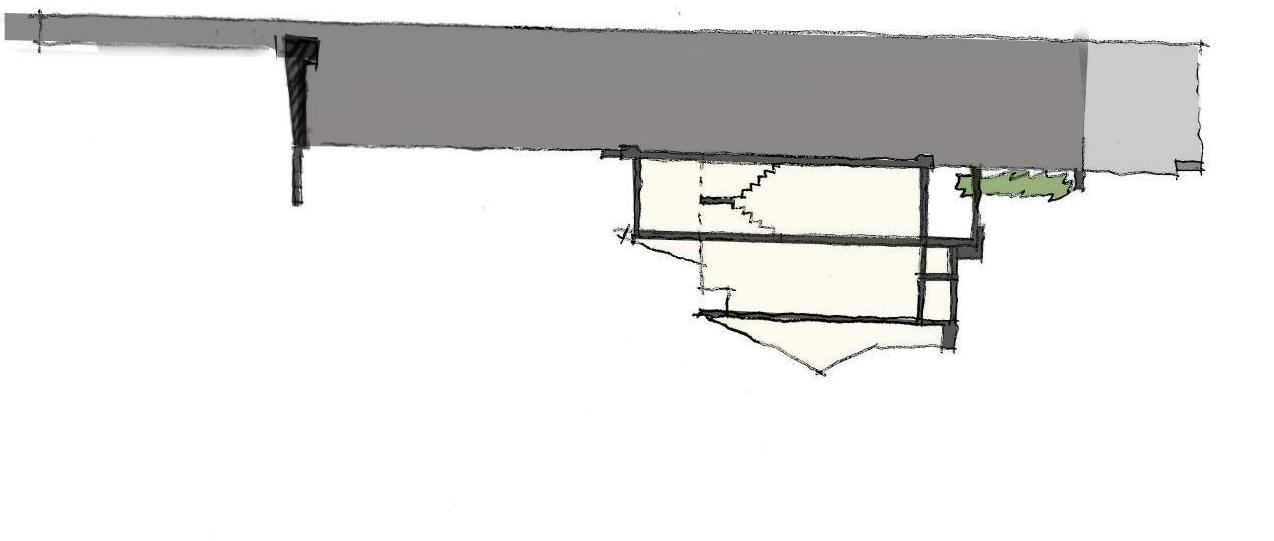
Acoustic Wall
• A suitably placed and aesthetically treated (compatible with fi nishes of residential structures and can incorporate suitable artistic/cultural themes) acoustic wall approximately 7m in height is to be constructed within the BMSF lot and covering its western and southern perimeter. • Where appropriate any BMSF building can be designed so as to avoid the need for a 7m high wall along the
perimeter. The height of this wall above the levels of adjoining land will vary depending on the design level of the BMSF lot. Residential dwellings adjoining the boundary of the BMSF are to: • Have rooms mechanically ventilated or air-conditioned to allow the windows to be closed for noise control purposes; and • Have a minimum 6mm glazing on ground and fi rst fl oor windows facing the BMSF. Residential dwellings adjoining the boundary of the BMSF are not required to install special window seals on such windows.
10m rear setback 10m rear setback in response to in response to overshadowing of the overshadowing of the Maintenance and Dry Maintenance and Dry Boat Storage Facility Boat Storage Facility
Maintenance and Dry Maintenance and Dry Boat Storage Facility Boat Storage Facility structure Envelope structure Envelope Facility structure up to 10m built to boundary Facility structure up to 10m built to boundary and no higher than 6.5m above ground level of and no higher than 6.5m above ground level of adjoining residential allotments adjoining residential allotments Facility structure to be no more than Facility structure to be no more than 15m high beyond the 10m setback from 15m high beyond the 10m setback from southern boundary southern boundary
Acoustic Acoustic fence fence 2.4m high 2.4m high Height Height 5-6.5m 5-6.5m Height 10m Height 10m
4-5m Retaining wall
FIGURE 41: Indicative Maintenance and Dry Boat Storage Facility structure to be built to the boundary. Longer lots to ensure acoustic amenity and solar access to the dwelling can be achieved in response to overshadowing of the Maintenance and Dry Boat Storage Facility
43
4DESIGN GUIDELINES FOR DETACHED HOUSING · PRECINCT A PRECINCT A
Harbour Boulevard
Lots located within 40 metres of Harbour Boulevard will be impacted by road traffi c noise. Relevant lots will be confi rmed as part of any development approval for subdivision and suitable acoustic measures will be on the title of the land.
Light spillage
Measures to prevent light spillage from the boat ramp/boat ramp car park and BMSF will be submitted for assessment with relevant applications. This will include vehicle headlights, street lighting and lighting for the boat ramp/boat ramp car park and BMSF and will satisfactorily address relevant standards/criteria.
Solar access
Acoustic protection measures are not to prevent solar access provisions in these design guidelines being complied with.
In principle, the rear boundary setback of dwellings on lots 1038 – 1046 is a minimum 10 metres to ensure solar access is complied with. This will be confi rmed as part of any development approval for dwellings.
Design of confl ict points between the harbour perimeter pedestrian path and boat related activities
There are areas where the harbour perimeter pedestrian path intersects with the boat launching facility and activities related to the boat storage/maintenance facility, such as the travel lift. These have the potential for confl ict between users of the path and users of these facilities. In the design of these areas consideration must be given to the forecast frequency and times that:
• boat related activities will intersect the pedestrian path; and
• the pedestrian path will be used.
Design of this area must account for this forecast and ensure all user groups have safe and reasonable access to the respective facilities.
4.11 SERVICE AREAS AND AUXILIARY
STRUCTURES
Elements such as aerials, solar panels, air conditioners, gas and water meters, storage structures and swimming pools are to be considered as integral parts of the design of your home.
Design Objective
• To ensure that utilities, services and auxiliary structures meet occupants' needs without detracting from the visual qualities of the streetscape.
Design requirements Aerials, Antennae and Satellite Dishes
• Where television antennae or satellite dishes are required, they are to be located at the rear of dwellings away from public view.
Outbuildings, Storage and Bins
• Storage should preferably be incorporated into the main dwelling. • Any external 'sheds' or storage areas should be limited to a maximum size of 10m2 .

Water tank and clothes drying services screened from public view Screening to Services

• Any pool equipment is to be stored out of public view. • Garbage bins are to be stored on your property and out of sight / screened from public view.
Solar Water Heaters and Collectors
• Solar hot water heaters located on the roof should be screened from public view wherever possible. It is desirable that they are integrated with the slope of the roof. • Tanks associated with solar hot water systems are not permitted to be located on the roof. • In the instance of north facing lots, photovoltaic panels should to be integrated into roof design to minimise adverse impacts on the streetscape.
Mailboxes
• Mailboxes are to be integrated into the front fence masonry pier.
Services and Water Tanks
• Water and gas services, fuel storage tanks, gas, water and electricity meters and rainwater tanks are to be located away from public view. • Where air conditioning is used, all equipment must be located away from public view. Any units should be mounted below 1.8m height on any external wall. • Refuse storage areas, drying areas and clotheslines are to be located away from public view. • Water collection is encouraged and required by BASIX. Above ground tanks that are visible from public view are to be adequately screened and should be similar in colour to the home or be neutral.
Swimming Pools
• Must comply with all relevant
Australian standards for fencing and gates. • Be in the back garden and setback a minimum of 900mm from the rear and side boundaries to the pool water edge. • Satisfy Council requirements.
• With north-facing lots, a pool may be located in the front or side setback, subject to appropriate landscape treatment to ensure the streetscape is not dominated by blank walls or high fencing.
DESIGN GUIDELINES FOR DETACHED HOUSING · PRECINCT A PRECINCT A
4.12 BOATS AND CARAVANS
If and where applicable, the provision for the parking and storage of recreational vehicles such as boats and caravans is to be included in the design of your home to minimise the impacts of vehicles on the streetscape.
Locations and Treatment
• Parking of recreational vehicles (boats, caravans etc) is not permitted to the front of properties. • Any enclosure for parking and storage of recreational vehicles is to be provided behind the residence/garage and/or screened from public view.
• Materials and colours of the enclosure and screening should be consistent with or complement the main dwelling.
• Only one driveway crossover is permitted and is to be designed in accordance with Shellharbour Council specifi cations.
45
4DESIGN GUIDELINES FOR DETACHED HOUSING · PRECINCT A PRECINCT A
4.13 SITE MANAGEMENT
During the construction of your home your builder is required to minimise and manage waste and soil erosion.
Design Requirements
• A Soil and Erosion Management plan is required as part of your development application. • A Waste Management Plan is required as part of your development application. • Storage of building materials on public domain (such as verges, footpaths or roadways) or neighbouring properties is not permitted.
4.14 SIGHT DISTANCE FOR
DRIVEWAYS AND FOOTPATHS Design Objectives
• Provide good visibility for both pedestrians and drivers in vicinity of the junction between the driveway/ garage and the footpath.
• Enable drivers/vehicles entering or exiting the property to see and be seen and heard.
Footpaths
• Footpaths in Precinct A are generally 4 metres wide with a 1.2m paved path setback 0.6m from the property boundary.
• Laneways generally do not have a formal footpath and will be landscaped accordingly.
Design Requirements
The objectives can be achieved by ensuring structures/landscaping within the property, structures/landscaping on the footpath and boundary fencing/walls/ gates, do not interfere with a clear line of sight for drivers/vehicles entering or leaving a garage or driveway.
Garage Setbacks
In Precinct A Detached Housing, garage doors are generally setback from the footpath as follows:
• 5.5m to primary frontages
• 2m to secondary frontages • 1.5m to laneways as secondary frontage
• 0.5m to rear loaded laneways
An area of land as shown on the fi gures below is free of any structures, including fencing/walls/gates and landscaping.
For rear loaded laneways, 2 metres either side of the garage door, on the road reserve area and garage setback area within the property, will only have landscaping/structures low enough to not impede driver/pedestrian visibility.
With any inconsistency between this section and other provisions on walls and fences, this section will apply.
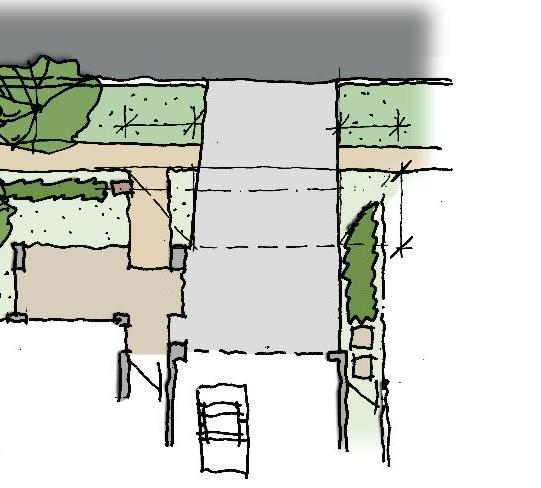
Areas to be Areas to be kept clear kept clear is between is between broken red broken red lines lines
2m 2m GARAGE GARAGE
2m 2m 2m 2m
PRIMARY STREET PRIMARY STREET 5.5m setback 5.5m setback from property from property bounday to bounday to garage door garage door
0.6m verge 0.6m verge 1.2m wide 1.2m wide paved path paved path Kerb Kerb Areas to be Areas to be kept clear kept clear is between is between broken red broken red lines lines
2m 2m GARAGE
2m 2m 2m 2m
SECONDARY STREET SECONDARY STREET 2m setback 2m setback from property from property boundary to boundary to garage door garage door 1.2m wide 1.2m wide paved path paved path Kerb Kerb 1.5m min. setback 1.5m min. setback to garage to garage
2m 2m GARAGE GARAGE
LANE LANE Areas to be Areas to be kept clear kept clear is between is between broken red broken red lines lines
2m 2m
Garage Setback - Primary Frontage Garage Setback - Secondary Frontage Garage Setback - Laneway Secondary Frontage
5. LIVABILITY & SUSTAINABILITY
DESIGN GUIDELINES FOR DETACHED HOUSING · PRECINCT A
5.1 LIVABILITY
A livable home is designed and built to meet your changing needs throughout your lifetime.
Livable homes include ‘easy living’ features that make them safer, more comfortable and easier to access for everyone, at every stage of life.
Easy living features include: • A safe, continuous, level and step-free path of travel from the street entrance and/or parking area to your home’s entrance; • At least one step-free entrance into your home; • Space around your car park to ensure you can open car doors fully and easily move around the vehicle; and • Stairways designed to reduce the likelihood of injury and also enable future adaptation.
Find out more by downloading the free Livable Housing Design Guidelines: www.lha.org.au.

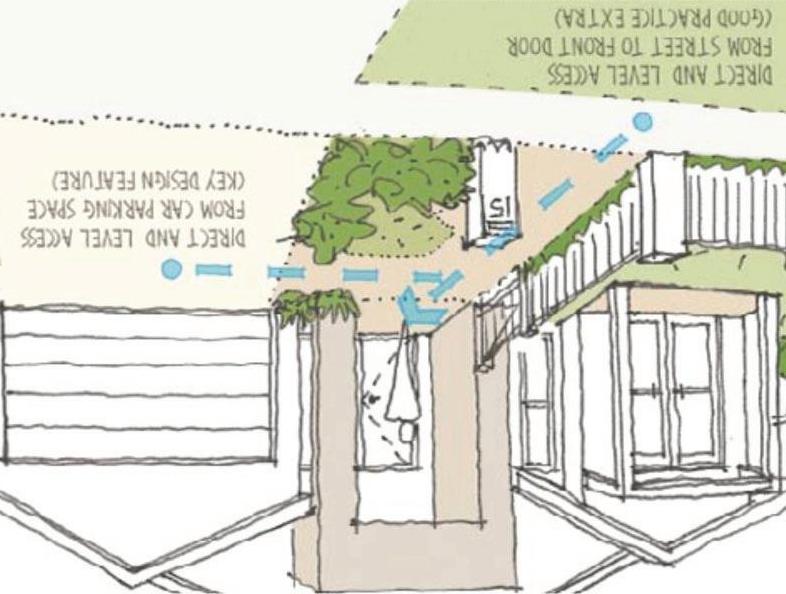
Direct and level access from street and parking areas (Source: Livable Housing Australia)
5.2 SUSTAINABILITY
Frasers Property Australia and Shellharbour City Council are committed to creating a sustainable community at The Waterfront Shell Cove. Improving the performance of your home through environmentally sustainable design is a major focus of our sustainability approach.
This section articulates specifi c practices to be adopted in the design and construction of dwellings at The Waterfront Shell Cove to assist you in designing your new sustainable home.
All dwellings are to comply with current standards including BASIX and Nathers. All owners and builders are encouraged to go beyond the regulatory requirements to increase the sustainability of development at The Waterfront Shell Cove.
5.3 ENERGY EFFICIENCY
Minimising energy consumption of households is an important contribution to reducing greenhouse emissions that contribute to climate change.
The energy consumption of households can be reduced though the inclusion of fl uorescent or LED lighting, high star rating appliances such as refrigerators and washing machines and the installation of ceiling fans, external clothes lines and skylights.
Maximising natural heating and cooling features of your site and home will reduce the need for mechanical thermal comfort control by air conditioning. It is recognised that there are some conditions when air conditioning and
Photo voltaic energy generation Integrated solar tiles (Nu-Lok) Operable timber louvres for sunshading and privacy
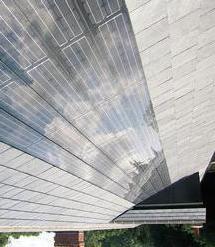

47
5DESIGN GUIDELINES FOR DETACHED HOUSING · PRECINCT A
heating may be desirable. Where installed, air conditioning is to be energy effi cient. Fan based evaporative cooling and gas heating systems are encouraged.
Use of power generated from renewable sources by installing photo voltaic cells or buying green energy is encouraged.
Design Objectives
• To minimise energy consumption. • To encourage the use of renewable and cleaner energy resources.
Design requirements
• Install energy effi cient light fi xtures and lamps. • Provide an external clothes drying line (appropriately sited to receive sunlight and away from public view). • Where air conditioners are to be installed homes are encouraged to have an inverter type system with a minimum 6 Star energy rating. • Connect to natural gas. The use of gas-fi red heaters is encouraged such as ducted space heaters or solar boosted gas fi red hydronic in-fl oor heating. In summary, for energy effi ciencies, it is suggested that homes have: • A minimum 1.5kW solar PV system (on the roof). • 5 star rated instant gas hot water system. • Ceiling fans in bedrooms.
For more information, go to www. livinggreener.gov.au/.

Maximising daylight Promote indoor / outdoor spaces Metal louvred screens
5.4 PASSIVE SOLAR DESIGN


Passive solar design allows your home to collect, store and distribute solar energy in winter and protects from solar heat gain during summer.
Passive design responds to the orientation and microclimate of a lot, considers glazing locations and provides for appropriate eaves, awnings and sun shading devices.
Shell Cove experiences a warm humid summer and mild winters. Wherever possible, living areas should be oriented to the north (15º west of north to 30º east of north) with glass and large overhangs to offer protection from summer sun
DESIGN GUIDELINES FOR DETACHED HOUSING · PRECINCT A
and to allow winter solar gain during the daytime. Large areas of glass facing north-west to west should be avoided to reduce summer heat gain. Bedrooms should face east to south and service rooms west to south.
Openings for cross ventilation and cooling should face north and those to the south of minimum size to allow for natural light and ventilation.
Roofs should have refl ective insulation and roof bulk insulation of R3.5 min above the ceiling. External walls should be insulated. Thermal mass, for example concrete for fl oors in living rooms to capture winter daytime sun, is an advantage.
Openings to the east and west should have, both vertical and horizontal, shade devices or adjustable shading.
Design Objectives
• To create energy effi cient dwellings that minimise energy consumption. • To maximise the internal comfort of dwellings whilst reducing the need for mechanical climate control.
Design requirements
• Orient living spaces with large openings to the north where practical. • Design house so that operable windows and louvres allow for cross ventilation , natural airfl ow and to take advantage of breezes. • Include sun control devices such as eaves (minimum 450; 600mm encouraged), awnings or shade devices to allow sunlight into the building during winter and to provide shade in summer. • Install insulation to walls, ceilings and fl oor slabs. • Consider incorporating thermal mass elements, such as thick internal walls and concrete slabs.
• Consider incorporating thermal mass in external walls (reverse brick veneer construction).
Light coloured roofs to refl ect heat to refl ect heat
Insulation to ceilings Insulation to ceilings and walls
Allow for good cross ventilation

Insulation and thermal mass Insulation and thermal mass
FIGURE 42: Passive solar design principles Solar collectors Solar collectors Effective eaves and Effective eaves and sun shades sun shades
Deciduous trees Deciduous trees for summer for summer shade and shade and winter sun winter sun

Effective sunshading devices Operable shutters for cross ventilation Generous eaves for sun protection
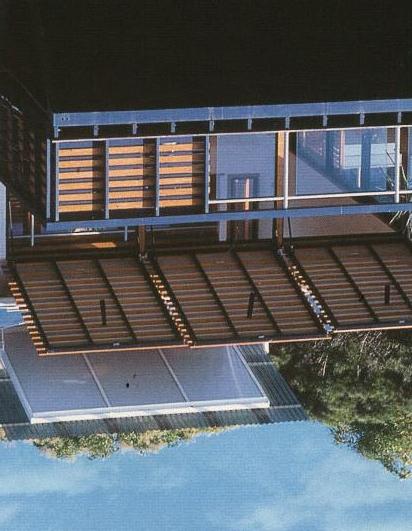

49
5DESIGN GUIDELINES FOR DETACHED HOUSING · PRECINCT A
5.5 WATER CONSERVATION
Reducing the water consumption of your home will contribute to the protection of our natural water resources.
Design Objectives
• To minimise water consumption. • To facilitate the effi cient use of water resources.
Design requirements
• Specify and install appliances and plumbing fi xtures of the highest relevant rating. Dual fl ush toilet systems or better to be used. • Provide for rainwater capture and reuse. • On site collection and reuse of water for landscape irrigation, toilet fl ushing and washing machines is encouraged.
In summary, for water conservation, it is suggested that homes: • Provide a 5000L water storage tank. • Provide 4 star taps and toilets.

Screened refuse storage Permeable surfaces to gardens encouraged Recycled brick paving (Recycled brick Pty Ltd)
5.6 WASTE
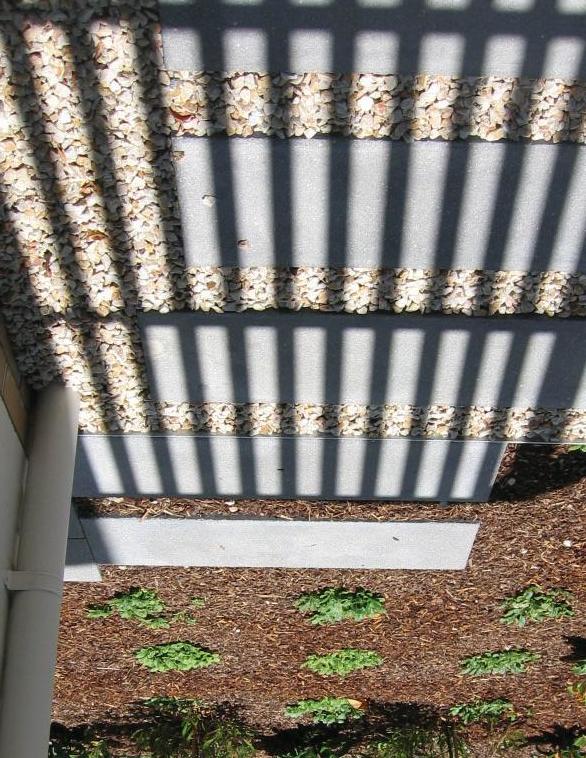

Well designed waste collection strategies will facilitate recycling and reduce the amount of waste going to landfi ll.
Design Objective
• To reduce waste and landfi ll during construction and ongoing occupation of dwellings.
Design requirements
• Design homes to minimise waste of materials in construction. • Design kitchens with space for recycled waste and compost bins. • Provide correctly sized and suitable facilities to enable the easy collection, storage and disposal of recycling and segregated waste. • Provide suitable facilities for composting and reuse of green wastes in the garden. • Locate waste storage and collection areas in an on-site location that is unobtrusive, avoids odour and noise, and mitigates any adverse impacts on neighbouring properties.
5.7 MATERIALS
The selection of sustainable materials can reduce the environmental impact of your home.
Design Objective
• To encourage the use of renewable low impact materials in the construction of dwellings.
Design requirements
• The use of recycled building materials is encouraged. • The use of low embodied energy materials is encouraged. The adoption of techniques that reduce the amount of material used for construction, the environmental impact of the selected construction materials, and the effi cient use of those materials is encouraged. • The use of materials with low Global
Warming and Ozone depleting potential is encouraged. • Consider the life cycle of materials, manufacture, maintenance and disposal. • Where concrete is to be used consider a 'Green Concrete', which is a green 3 star rated product and contains up to 60% recycled content.
APPENDIX A – DESIGN APPROVAL APPLICATION FORM
Please complete this form and provide with the submission to the Shell Cove Architect as follows:
• One soft copy is to emailed to info@shellcove.com.au
1.Owner Details
Contact Numbers
Home: ________________________
Mobile: ________________________
Fax: ________________________
2.Builder Details
Contact Numbers
Home: ________________________
Mobile: ________________________
Fax: ________________________
For approval by Frasers Property Australia (Shell Cove Architect) prior to submission of a Development Application (DA) or a Complying Development Certifi cate Application.
Disclaimer: Frasers Property Australia will endeavour to process your application within ten working days. Incomplete applications or those requiring amendment may take longer to process and resolve.
3.Architect or Designer (if different from builder)
Contact Numbers
Home: ________________________
Mobile: ________________________
Fax: ________________________
4.Lot Details and Site Information
Precinct A Lot Number __________________
(Ground fl oor including porches, verandahs, garage area)
(As a % of the allotment area, refer to defi nition for 'site coverage' on page 55)
5.Signature: OWNER BUILDER AGENT (tick one)
6A
51
APPENDIX B – APPLICANT HOME DESIGN PACKAGE CHECKLIST FOR THE SHELL COVE ARCHITECT (SCA) SUBMISSION
1.Site Analysis (1:200)
House design and lot layout to be site responsive - consider:
Slope
Vehicular and Pedestrian Access
Neighbour Amenity
Views
Solar Access/Orientation
Breezes
Location of Services
Noise and Light Spill Sources (Boat Launch Facility)
Noise Sources (Maintenance and
Dry Boat Storage Facility)
Noise Sources (Harbour
Boulevard)
2.Site Plan (1:200)
Including:
Dimensions and areas of proposed building structures
Setbacks to all boundaries and private open space dimensions
Proposed fi nished fl oor levels
Contours, original and proposed fi nished ground levels, including changes in level
Allotment boundaries, dimensions, areas and north point
Driveways, parking areas, all hard stand surfaces (including paving and pool)
Details of any proposed retaining walls
Open space calculations
Locations of all ancillary areas and structures, including refuse areas, storage, rainwater tanks, clothes drying etc.
3.Floor plans, roof plan and elevations (1:100)
Including:
Internal fl oor plan layout including rooms, balconies, verandahs, decks, windows, door openings and dimensions. Elevations from four sides, indicating proposed building height and fencing details. Roof form and pitch, showing dimensioned eaves and overhangs. Sections Any outbuildings Landscape Plan (1:200), including: – Existing street trees – External features e.g. tanks – Paved areas – Turf and mulched areas – Retaining walls (elevations required) – Fences and gates (elevations required) – Number and types of plants – Shadow diagrams 3D Perspective (in colour) for key corner lots
4.Material and colour schedule
Including:
Building materials and fi nishes proposed for external walls, roofi ng, pathways, driveways, fencing and retaining walls
Colour schedule for external walls, roofi ng, pathways, driveways and fencing
Note: A BASIX Certifi cate is not required for submissions to the SCA. However, a BASIX Certifi cate will be required for Development Applications to Council and / or submissions to other Principal Certifying Authorities.
APPENDIX C – KEY OBJECTIVES AND MANDATORY CRITERIA CHECKLIST (BY SCA)
Section 3 – Lot Type and Site Planning for Detached Housing
Building Siting and Orientation Maximum Site Coverage Minimum Setbacks:
•Front – Primary (4.5m) –Secondary (2.5m) •To Garage (1m behind main facade) •Side (Ground & Upper 1.2m)
•Rear (Ground 3m, Upper 6m) •Zero lot lined building (where permissible) •Articulation Zone (2.5m front, 1.5m side) Solar Access: Site & Landscape: •Site coverage (60-65%) •Landscaped area (10-15%) Private Open Space (POS):
•Total Private Open Space (min. 40m2) •Principal POS (min 24m2 dim 4m) •POS in front & rear setback (min dim 3m) •POS on front Balcony (min dim 2.5m)
Complies with guidelines Requires additional information
Section 3 – Lot Type and Site Planning for Section 3 (continued) Detached Housing
(Refer to pages 8-14)
Building Height Car Space Provision Corner Lots:
•Address primary and secondary streets •Design to address the corner •Vehicular access Studios Sloping Sites: •Design to respond to topography and incorporate slope in the house design •Cut and fi ll / retaining walls no higher than 750mm •Landscape terracing & rear retaining walls (min 3m from rear boundary)
•Finished fl oor level (max. 500mm above natural ground)
Complies with guidelines Requires additional information
Section 4 – Building Design, Architectural and Landscape Character
Facades / Street Frontage: •Contemporary coastal character •External Materials: –50% lightweight material –Articulated facades –Masonry base •Verandahs, Balconies and Balustrades: –Verandah / front porch 30-50% width of facade (encouraged) •ESD –Operable screens/louvres –Protective eaves (min. eaves 450mm, 600mm encouraged) Building Entry: •Verandah / front porch / covered area over entrance •Visible / safe entry •Contemporary front door (opening minimum 850mm for wheelchairs) •Entry pier / street no. address •Surveillance to street(s)
Complies with guidelines
53
Section 4 – Building Design, Architectural Section 4 (continued) and Landscape Character
Important Corners: •Two storey building elements •Design to address primary and secondary streets & the corner Garages and Driveways: •Setback from building facade (1m) •Garage opening (maximum 6m) •Garage / parking from laneways (where appropriate) •Garage / parking (min dimensions) Roof Design: •Simple, articulated forms •Roof pitch •Light colour, not highly refl ective or dark •Integrated service elements (skylights solar cells etc) Exterior Design Palette: •Wall material & colours •Roof, gutters and downpipe materials & colours •Window and louvres materials & colours
Complies with guidelines Requires additional information
Section 4 – Building Design, Architectural Section 4 (continued) and Landscape Character
•Sunshade devices materials & colours • Fences materials & colours
•Garage doors materials & colours •Front driveway / pavement materials & colours Details: –Sun shading devices (eaves / screens / shades) –Integrated gutters and downpipes –Openings (vertical proportions) Walls and Fences: •Open varied streetscape •Consistent and quality design •Privacy •Defi nition of public private spaces •Casual surveillance
•Front Fences: –Piers & Landscaping (at corners and entry) –Letterbox, street number (and lighting) –Fence height and design –Fence Type 2 (where mandatory)
Complies with guidelines Requires additional information
Section 4 – Building Design, Architectural Section 4 (continued) and Landscape Character
•Courtyard fencing (where appropriate) • Corner lot & fencing to laneways •Side and rear / Interlot fencing •Retaining walls •Driveway sight distance safety Landscape Design: •Suitable for coastal conditions
•Designed for low water, energy and chemical usage •Compatible with / complement main dwelling •Soft landscape in front setback (50%) •Solar access to principle POS •Tree planting (min quantities and sizes) •Species selection –Minimum 70% native plant species –Suitable for soil type, climate & habitat
Complies with guidelines
Section 4 – Building Design, Architectural Section 4 (continued) and Landscape Character
•Hard and soft landscaping (for soft landscaping min 60% turf & 40% planting bed Noise and Amenity: •Acoustic Impacts Study submitted Service Areas and Auxillary Structures: •Aerials, antennae and satellite dishes •Outbuildings, storage and bins •Solar water heaters and Collectors
•Mailboxes •Services and Water Tanks •Swimming pools Boats and Caravans: •Boat / Trailer storage Site Management
Complies with guidelines Requires additional information
Section 5 – Livability & Sustainability
Livability Sustainability - BASIX and Nathers compliance Energy Effi ciency Passive Solar Design Water Conservation Waste
Materials
Complies with guidelines Requires additional information
APPENDIX D – REFERENCES AND RESOURCES
Some useful references are set out below
• Residential Housing Code, NSW Department of
Planning • Housing for Life, Master Builders Association of ACT, 2001 • Australian Network for Universal Housing Design www. anuhd.org • Nabers Home www.nabers.gov.au • Green Building Council Australia www.gbca.org.au/ • One Planet Living www.oneplanetliving.net • International living future institute, www.ilbi.org • Passivhaus www.passivhaus.org.uk/ • Think Brick 'Climate Design Wizard' www.thinkbrick. com.au/climate-design-wizard • Living Greener www.livinggreener.gov.au/ • Your Home Design Guide www.yourhome.gov.au • Liveable Housing Australia www.livablehousingaustralia. org.au.
55
APPENDIX E – GLOSSARY OF TERMS
The following defi nitions apply to the terms used in these Design Guidelines:
Ancillary structures are external building attachments, such as satellite dishes, rainwater tanks, air conditioning systems, aerials, clothes lines and hot water storage tanks.
Articulation zone means an area within a lot within which building elements are or may be located. The articulation setback area from a primary road is measured horizontally for a distance of 1.5m from the foremost edge of the building line. Building height (or height of building), at any point of a building, means the vertical distance between that point at ground level (existing) and the highest point of the building immediately above that point, including architectural trim features, plant & lift overruns but excluding communication devices, antennae, satellite dishes, masts, fl agpoles, chimneys, fl ues and the like. Measured in Australian Height Datum (AHD).
Building line means the line of an existing or proposed external wall or roof edge of a building (other than a wall or roof of any building element within an articulation zone), or the outside face of any existing or proposed ancillary development, closest to a boundary of a lot. Character means an expression of qualities which distinguish one locality from another. The character of one place is differentiated from another by features such as shape and slope of the land; tree canopy; views; building size and style and streetscape scale.
Construction Management Plan
is a document which details site maintenance and management actions; risks; preventative measures and response actions to accidents and damage to the site during construction. It consists of requirements for Training and Awareness; Erosion and Sediment Control; Waste Management; Risk Assessment and Management; Site Footprint Controls and Noise Control.
Courtyard is an outdoor space, integrated with your building design, which is intended to provide additional privacy; a place to grow a garden containing exotic/invasive vegetation; and a space for pet containment.
Detached, in relation to a building or structure that is complying development, means more than 900mm from another building or structure. Detached studio means ancillary development that is habitable and is: a)established in conjunction with a dwelling house, and
b)on the same lot of land as the dwelling house, and
c)separate from the dwelling house,
d)located above a garage, and
e)limited to one bedroom.
The defi nition for a 'Detached studio' under these Design Guidelines does not include a 'Secondary dwelling' as defi ned under the Shellharbour Local Environmental Plan 2013.
A 'Detached studio' does not require additional contributions in accordance Section 94 of the Environmental Planning and Assessment Act 1979. However, if the proposed detached studio meets the defi nition of a 'secondary dwelling' under the Shellharbour LEP 2013, then additional Section 94 contributions will be payable.
Refer also to defi nition for 'Secondary dwelling' under these Design Guidelines and within the Shellharbour Local Environmental Plan 2013. When submitting a development application, the applicant is required to confi rm the applicable defi nition(s) under Shellharbour LEP 2013 to allow Council to calculate the required developer contributions
Duplex means the same as a 'Dual occupancy' as defi ned under the Shellharbour Local Environmental Plan 2013.
A 'Duplex', as defi ned by these Design Guidelines and/or a 'Dual occupancy' as defi ned under the Shellharbour Local Environmental Plan 2013 require contributions under Section 7.11 (formerly section 94) of the Environmental Planning and Assessment Act 1979 for each single dwelling.
Dwelling means a building containing one dwelling, an attached dwelling or a semi-detached dwelling, but does not include any part of the building that is ancillary development or exempt development.
Garden means all outdoor areas (not including a courtyard), not occupied by a building. A garden would consist of a range of native plants selected from the list of endemic species in the vegetation associated for your lot (found on your site analysis plan).
Ground level is the level of the land surface before development is carried out, measured in Australian Height Datum (AHD).
Habitable room is a room, other than a bathroom, laundry, garage, water closet or the like, that is designed, constructed or adapted for the activities normally associated with domestic living.
Home is a collection of buildings and structures on a lot, including the primary dwelling and associated out buildings such as garages, sheds and studios.
Lightweight external building
materials are cladding material and small section supporting posts and frames which give the external appearance of the relaxed character of the Shellharbour area (e.g. weatherboard, timber, corrugated iron, ply-wood etc.)
Living area is a term describing internal space used for domestic activities (e.g. lounge, family and dining rooms), excluding non-habitable rooms and bedrooms.
Out buildings are any detached buildings or structures such as studios, cubby houses, tool sheds and the like. Primary street means the street to which the front of a dwelling house, or a main building, on a lot faces or is proposed to face.
Private open space is an area of land, balcony or roof terrace suitable for private outdoor living.
Public view means views from the public domain, such as roads, pathways and walking tracks, foreshore reserves, open space corridors and parks.
Secondary dwelling is defi ned as per the Shellharbour Local Environmental Plan 2013.
A 'Secondary dwelling' requires additional contributions in accordance Section 94 of the Environmental Planning and Assessment Act 1979.
Refer to the defi nition for 'Secondary dwelling' under the Shellharbour Local Environmental Plan 2013.
Secondary street means, in the case of a corner lot that has boundaries with adjacent streets, the road that is not the primary street. In the case of a lot with frontages at both ends, it is the road that is not the primary street. Setback means the horizontal distance between the relevant boundary of the lot and the building line.
Setback area means the area between the building line and the relevant boundary of the lot.
Site analysis is a process of identifying and analysing key features of the site and immediate surroundings to assist in understanding how future homes will relate to your lot; neighbouring lots and The Waterfront Shell Cove neighbourhood.
Site coverage
Does not include:
a)an access ramp,
b)any part of an awning, blind or canopy that is outside the outer wall of a building,
c)a balcony, deck, patio, pergola, terrace or verandah attached to the dwelling house that is not enclosed by a wall higher than 1.4m above the fl oor level,
d)the eaves, e)a driveway,
f)minor storage buildings,
g)a fence or screen,
h)a pathway or paving,
i)a rainwater tank that is attached to the dwelling house,
j)a swimming pool or spa pool.
Waste Management Plan is an integral component of the Construction Management Plan dealing with the processing of waste during construction, and nominating you as being responsible for management.
57
As part of your purchase at The Waterfront Shell Cove, you will have received a copy of The Waterfront Shell Cove Design Guidelines for Detached Housing – Precinct A. Every home is required to comply with these Guidelines.
To encourage you to complete your home and landscape in accordance with the Design Guidelines and your SCA approved plans, Frasers Property Australia offers a $20,000 Design and Landscape Rebate.
This rebate applies to single dwelling homes and does not apply to duplex housing where more than one residence is constructed on a nominated duplex lot.
To claim your rebate, simply meet the following requirements within 24 months from the settlement of the land purchase: • Meet the Conditions of the Contract for Sale of Land from Shellharbour
City Council; • Comply with the requirements and intent of the Design Guidelines; and • Build your new home and garden in accordance with the designs that have been approved by both the
SCA and Shellharbour City Council.
When you are ready to apply for your rebate, please complete the application form and send to:
Shell Cove Architect c/o Shell Cove Sales & Information
Centre
PO Box 4148
Shellharbour NSW 2529
The SCA will then arrange to visit your home and garden. If your home and garden does not comply with the rebate requirements, the SCA will contact you to provide advice for improvement.
1.Application Details
Current Postal Address:
Phone:
Home: ________________________
Mobile: ________________________
Fax: ________________________
Email: _____________________________________________ 2.Purchase and Approval Details
3.Checklist
House is completed in accordance with the stamped drawings
Landscaping is completed in accordance with the stamped landscape plan
Sustainability requirements are in accordance with the BASIX compliance certificate or better
I / We have now completed our home and landscape in accordance with the plans approved by the Shell Cove Architect and would like to claim $20,000 House Design, Sustainability and Landscape Rebate.
59
BODY COLOURS · RENDERED OR BAGGED MASONRY BODY COLOURS · FACE BRICK
A “coastal” palette of colours related to the landscape has been selected for use on the main walls or “body” of the home – on bagged or rendered brickwork and painted lightweight materials such as weatherboards, CFC panels, metal and so on. Natural stains can be used on timberwork or plywood panels to express the natural qualities of the material.
Moody White Flokati Sateen Snow Kosciusko Pebble Autumn Bushland
Astor White
Taubmans
Pebble Bay
Weathered Stone Icing White
Dulux
Strauss White
Antique White U.S.A. China White
Hog Bristle Ecru Half Snowdonia Castle Grey
Handmade Linen Quarter HandmadeLinenQuarter Surfmist
Medlar Miller Mood There are a number of brick manufacturers and ranges to select from and these are subject to change.
Face brickwork will be permitted where the brick is of a single colour, smooth face and within the general coastal colour range indicated in these Guidelines. Rustic, rubbled, sandstone, fritted, textured or multi-coloured bricks will not be permitted. “Colourbrick” (Austral) is similar to a bagged brickwork fi nish and is permitted.
Preferred ranges and colours include: Austral: • Ultra Smooth Tempo, Lush and Chill • Whitsunday Hayman, Keswick and Brampton • Symmetry Stone and Portland • Urban One Silver, Almond • Colourbrick Coastal Beach, Foreshore, Marina, Wave, Kiosk and Island
PGH: • Smooth Harvest Cream, Cashmere, Smoke, Volcanic • Dry Pressed Wolverton Cream, Hawkesbury Bronze, Valley Grey • Composite Pebble, Charcoal, Aluminium, Urban Blue • Velour Crevole, Mild Steel, Volcanic
Silver Blaze
Smokey Pearl Sideshow Limed White
Self Destruct Dune Oyster Linen
Stone Dieskau
Stepney Note: The colours, materials and fi nishes shown in these Guidelines have been reproduced to represent actual product colours as accurately as possible. However, we recommend checking your chosen colour, material or fi nish against an actual sample of the product before purchasing. If you are printing this page, the colours will not be accurate using most printers and should not be used for colour matching purposes.
BODY COLOURS · FACE BRICK
Austral - Ultra Smooth
Lush Chill
Austral - Colourbrick Coastal
Foreshore Marina
Kiosk
Austral - Whitsunday
Hayman Keswick Brampton
Austral - Symmetry
Portland
Austral - Urban One
Almond Silver
PGH - Dry Pressed and Dry Pressed Linear
Wolverton Cream Hawkesbury Bronze
PGH - Composite
Pebble
Urban Blue Charcoal Megalong Valley Grey
Aluminium Aluminium
PGH - Alfresco
Truffl e Cocoa
PGH - Palazzo
Crema Camello Camello Sorbetto Sorbetto
PGH - Velour
Crevole Mild Steel Volcanic
PGH - Smooth
Harvest Cream Cashmere
Volcanic Smoke
PGH - Seascape (glazed)
Sea Salt Pumice
Dusk Lagoon
61
ACCENTS
Accents are strong, highlight colours to important elements such as doors, shutters and sun shades, gables and bladewalls or courtyard walls, and include deep blues, blue greys, greens, sand, ochre and rust.
Gravel Chip A38W Sheer Granite
Taubmans
Dallas Gold Ruby Rose Deep Water
Bee Hall
Timeless Grey Temptress
Xena Forest Blues
Namadji Relatively light to mid-tone and neutral roof colours are preferred to provide better energy outcomes and to not be the dominant element in the streetscape.
The preferred Colorbond colours are Bushland, Windspray, Dune, Shale Grey, Evening Haze and Surfmist. In order for any alternative roof material to be approved, it should be of a similar colour to the above.
Flat profi le tiles such as Boral “Terracotta Shingle” in colour “Mineral” or fl at concrete tiles such as Monier “Nullarbor” or “Horizon” would be acceptable.
ROOF TRIM
Trims can often be white or off-white to provide a coastal/boathouse character, e.g. to window surrounds, timber columns or fascias, or conversely a stronger colour than the main walls.
Astor White
Antique White U.S.A. Pebble Bay
Dovetail
Colorbond
Surfmist
Evening Haze Shale Grey
Dune Windspray
Bushland NATURAL MATERIALS
External materials that weather naturally can contribute to the coastal character and include weatherboard, timber sheeting, plywood and corrugated iron.
Various oils and stains can also be used to enhance the natural qualities of timber.
Wattyl Weathergard Stains
New Snow Gum Mountain Ash Western Cedar
Silver Birch Weathered Cedar New Jarrah
COASTAL COLOUR COMBINATIONS

Shale Grey
Stormy
Castle Grey Surfmist

Shale Grey
Windspray
Strauss White
Snowdonia
Gravel Chip
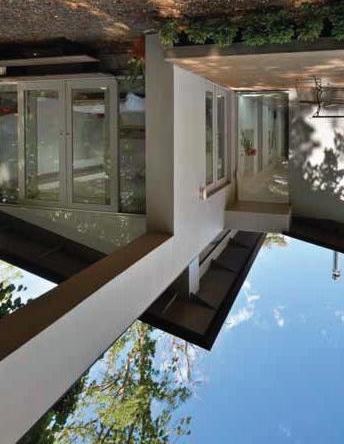
Dune
Astor White
Autumn Bushland
(Images and colour combinations sourced from Wattyl http://www.wattyl.com.au/system/galleries/download/pdf/Exterior_Colour_Schemes.pdf) Mantra
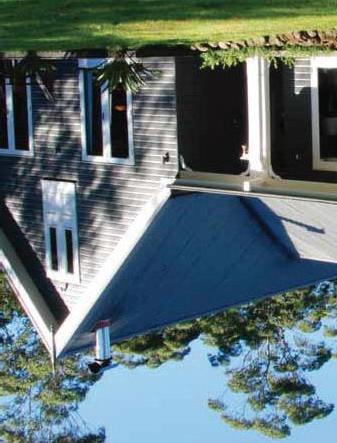
Shale Grey
Icing White

Sateen Snow
Flokati
Dune
63

